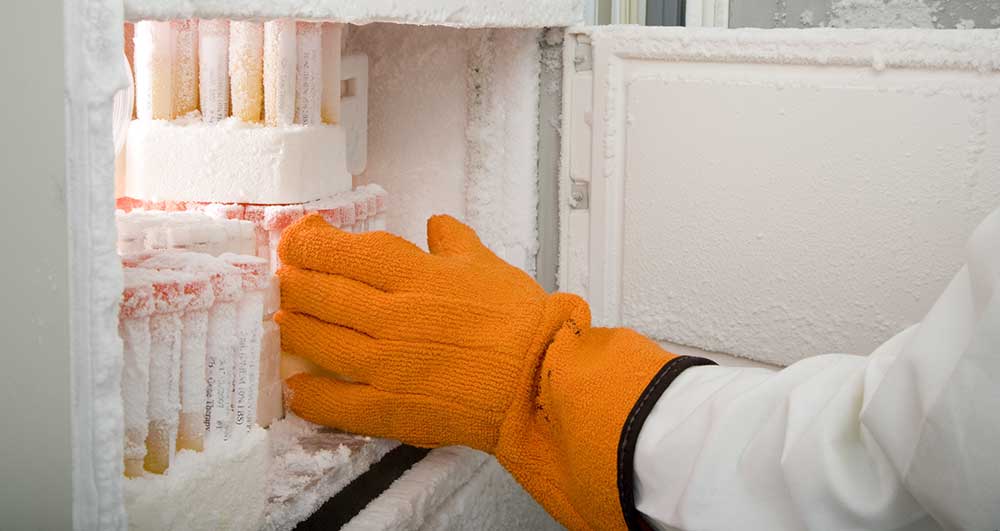
Low-Temperature and Ultra-Low Temperature Freezers for Covid-19 Vaccines
A question posed in the September 5-6, 2020, Wall Street Journal asks “do we have enough freezers?” This relates to the unusually cold storage temperatures – as low as -80⁰C – recommended by certain producers of Covid-19 vaccine candidates in Phase 3 clinical trials.
Proper vaccine storage temperatures have always been a concern as evidenced by the CDC’s continually updating its Vaccine Storage and Handling Toolkit. The Toolkit details stringent recommendations relating to critical considerations such as staffing and training for safe handling, storage and temperature monitoring, inventory management, transport, and emergency vaccine and storage handling.
Earlier, MarketWatch identified Moderna, BioNTech and Pfizer as examples of Covid-19 candidates requiring low temperatures (-20⁰C Moderna) and -70⁰C (BioNTech and Pfizer). Other candidates are J&J Janssen and AstraZenca at between 0⁰ and -10⁰C. In total, some 9 firms have advanced to Phase 3 trials as reported in a Wall Street Journal September 1 article.
Moving Covid-19 Vaccines along the “Cold Chain”
Manufacturers are also assessing how best to move Covid-19 vaccines along what is called the Cold Chain. As described in the CDC’s Toolkit, “the cold chain begins with the cold storage unit at the manufacturing plant, extends to the transport and delivery of the vaccine and correct storage at the provider facility, and ends with administration of the vaccine to the patient.”
Somewhat complicating matters is that permissible temperatures may vary along the “cold chain” line. Already some modifications have been made. For example, Moderna’s candidate was stored at -70⁰C for clinical trials but according to reports now plans to ship at -20⁰C.
Also to be resolved is the length of time and proper temperatures as these vaccines are prepared to be administered to the public. This makes low-temperature storage capabilities particularly critical for physicians, clinics and local pharmacies.
Scientific and Ultra-Low Freezer Options for Covid-19 Vaccines
Reports indicate a range of storage temperatures will be recommended for Phase 3 candidates – and presumably those that come on the market. These can be broadly classified as scientific, low temperature and ultra-low temperature freezers.
Here’s a brief explanation from our post on the subject. Note that manufacturers may define the temperature capabilities of their various models differently.
- Scientific laboratory and pharmacy freezers can control ranges from -10⁰ to -25⁰C (+14⁰ to -13⁰F).
- Low temperature freezers depending on the model and function: to – 25⁰, -35⁰ or -40⁰C (-13⁰, -31⁰, -40⁰F) minimum with a user-controlled range.
- Ultra-low temperature freezers control temperatures down to -86⁰C (-186.5⁰F) also with precise temperature control.
Meeting the CDC’s Toolkit recommendations to provide storage temperature monitoring and alarming systems when temperature excursions occur is critical when considering the unit best suited for your requirements.
While the CDC recommends continuous digital data recording systems, nothing beats manually recording vaccine temperatures at the beginning and end of the day. Assign personnel to perform this task. This also provides an opportunity to monitor vaccine stock.
With that let’s look at a few examples of freezers suitable for Covid-19 storage.
Examples of Freezer Candidates for Covid-19 Vaccine Storage
Scientific, low-temperature and ultra-low temperature freezers are readily available, and in a variety of storage capacities, for Covid-19 vaccines. Here we present a selection of the many offered by Tovatech. As shown in the detailed descriptions, these units comply with CDC recommendations.
For storage from -15 to -25⁰C
The 4.2 cu. ft. Nor-Lake freestanding or undercounter freezer is a perfect solution where space is at a premium.
For storage from -10 to -25⁰C
The 33 cu.ft. Nor-Lake premier freezer fits into a space just under 32” wide x 36” deep.
For storage from -40 to -85⁰C
The 9 cu. ft. So-Low ultra-low chest freezer features two LED displays on the front panel showing the actual interior temperature from -40°C to -85°C and set temperature.
For storage from -50 to -86⁰C
The 21 cu.ft. Norlake “White Diamond” ultra low upright freezer features 5 insulated interior compartments to reduce ambient temperature ingress when vaccines are stocked or removed.
How to Estimate your Covid-19 Vaccine Storage Requirements
As noted above, freezers are available in sizes ranging from countertop and undercounter units to upright units.
You can calculate vaccine storage inventory based on past experience.
As a general practice the CDC suggests keeping a 60-day supply on hand and ordering replacement stock on a 30-day cycle while keeping an eye on expiration dates. These calculations will assist in selecting the capacity of the vaccine refrigeration equipment you need.
Select your unit with enough room to store, without crowding, the largest inventory you might have at busiest point in the year – such as during the flu season.
Keep contents in their original packages, store with early expiration dates toward the front.
Full freezers (without crowding) do a better job of maintaining temperature. Replace removed stock with freezer packs.
Allow 2 to 3 inches between the contents and the side and back walls of the unit.
If you are choosing a new refrigerator or freezer select one without on-door storage to reduce the impact of ambient temperatures when the unit is open. If you have a unit with door shelves stock shelves with water bottles or freezer packs.
In Conclusion:
At this posting, research and testing continues with aim of developing, manufacturing, distributing and storing a vaccine or vaccines to combat Covid-19. What seems clear, thus far, is that reliable low temperature – including ultra-slow temperature – storage equipment will be required throughout the entire cold chain from manufacturing to administering these vaccines.
Please contact the vaccine freezer specialists at Tovatech for more information. Our PhDs are ready to help you with selecting the proper vaccine refrigeration equipment for your practice. We also suggest you download the CDC’s Vaccine Storage and Handling Toolkit.
